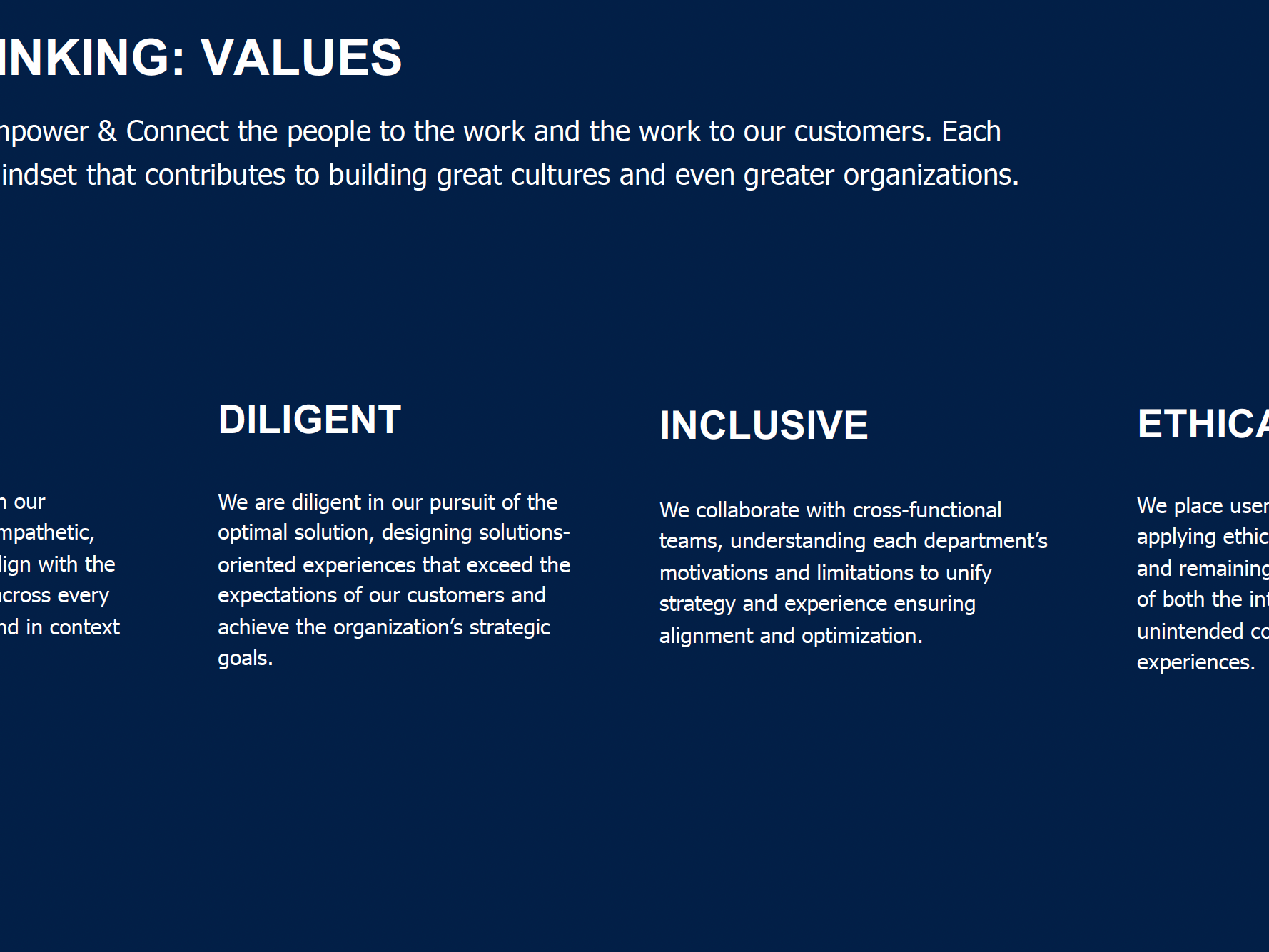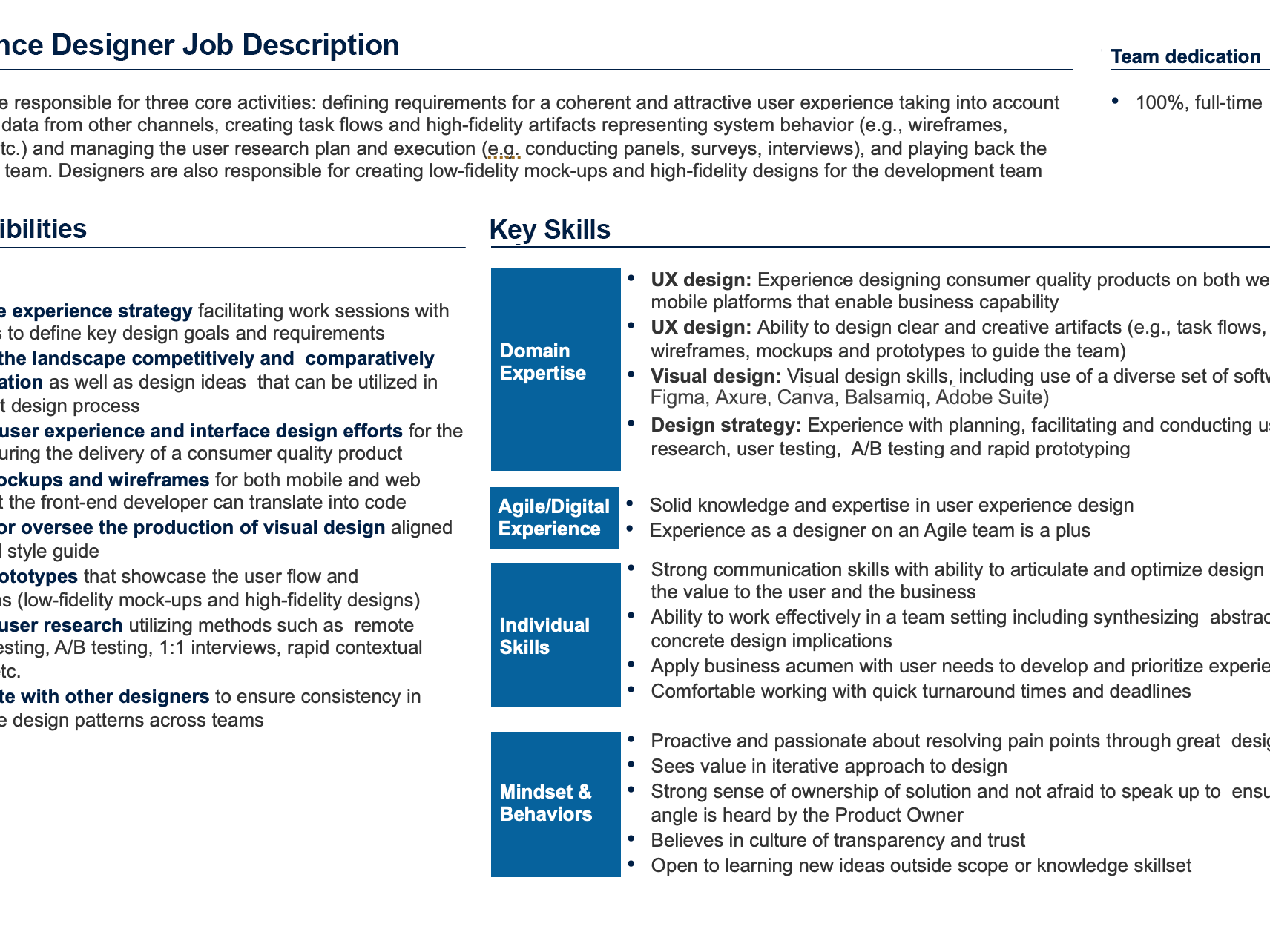Empathize – with users
Really get to really know your users needs and wants. Sit with stakeholders, ask big questions and challenge assumptions.
Conduct surveys, interviews, and use qualitative user testing to understand behaviors and needs we're trying to improve. Compare those against marketing insights gained from site data.
Define – users’ needs, their problem, and your insights
Based on user testing, observation and analysis collect and compile observations to create specific problem statements that can be targeted to solve by the team.
Ideate – by challenging assumptions and creating ideas for innovative solutions
Transition from identifying problems to collaboratively creating solutions for users. Sketch, brainstorm and ideate in phases. Use different mediums and tools to break out of habits. Then bring it back as a team applying best ideas to the problem statement to be solved.
Prototype – click able images, sketches, or high fidelity code
Whatever fidelity works for testing with users is what should be created. Sometimes high fidelity coded comps are needed, sometimes it's wires or paper prototypes. It really depends on what phase of the project that your in, what time you have, and what your trying to learn with user testing.
Test – gather insights with users or proxies
Conduct user testing in many environments, in person or online. Use affinity diagraming to gather insights from the team.
Gather insights from testing as a full team activity helps to iterate on product design ideas to rapidly improve them.
This process works for small and large projects and can be adjusted to meet various project, marketing and team needs.


